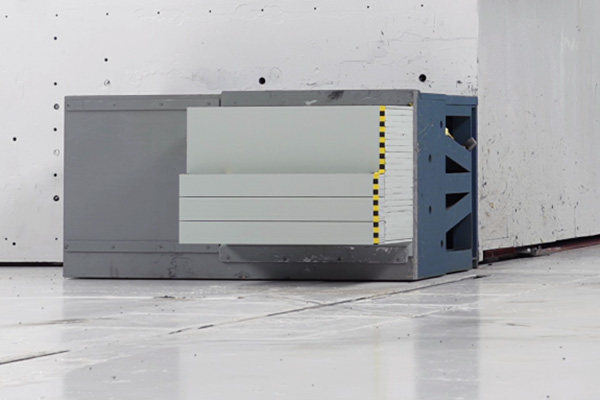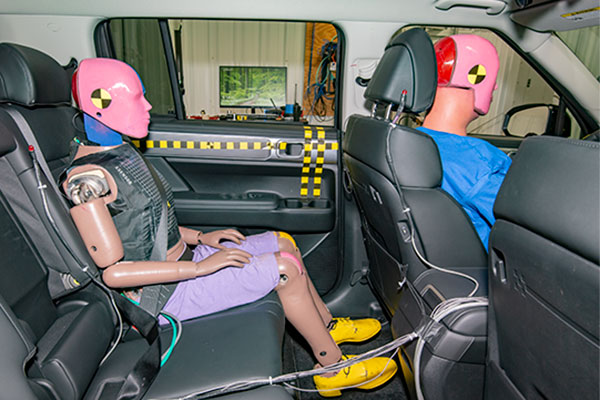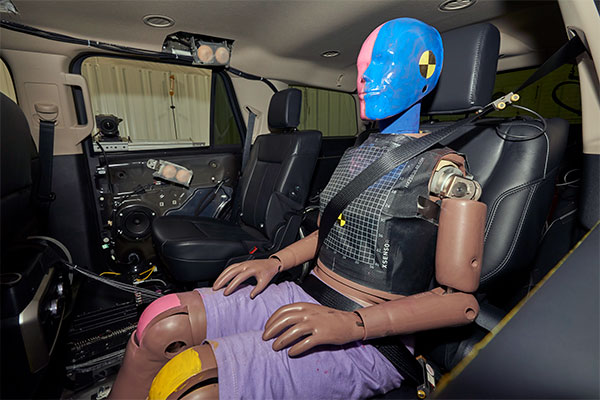Moderate overlap front
The moderate overlap front test represents an offset crash between two vehicles traveling in opposite directions at a little under 40 mph each. It was updated in 2022 to incorporate back seat protection.
The severity of a frontal crash depends on the vehicle’s weight, so ratings in this test can only be compared among vehicles of similar weight.


How the test is run
- A vehicle travels at 40 mph into a stationary barrier with 40% of the vehicle’s front overlapping.
- A Hybrid III dummy representing an average-size male is belted in the driver seat.
- A smaller Hybrid III dummy representing a small woman or 12-year-old child is belted in the second-seat behind the driver.


How vehicles are evaluated
- We measure intrusion into the occupant compartment at key locations.
- Sensors in the head, neck, chest, legs and feet of the dummies record injury risk.
- A belt-tension sensor and pressure mat on the chest of the second-row dummy provide additional information about chest injury risk in the back seat.
- High-speed film and greasepaint help us see the movement of the dummies during the crash so we can evaluate how well the seat belts and airbags work.


Updated moderate overlap front test protocol and technical information
For details on other tests we conduct, visit the About our tests page.